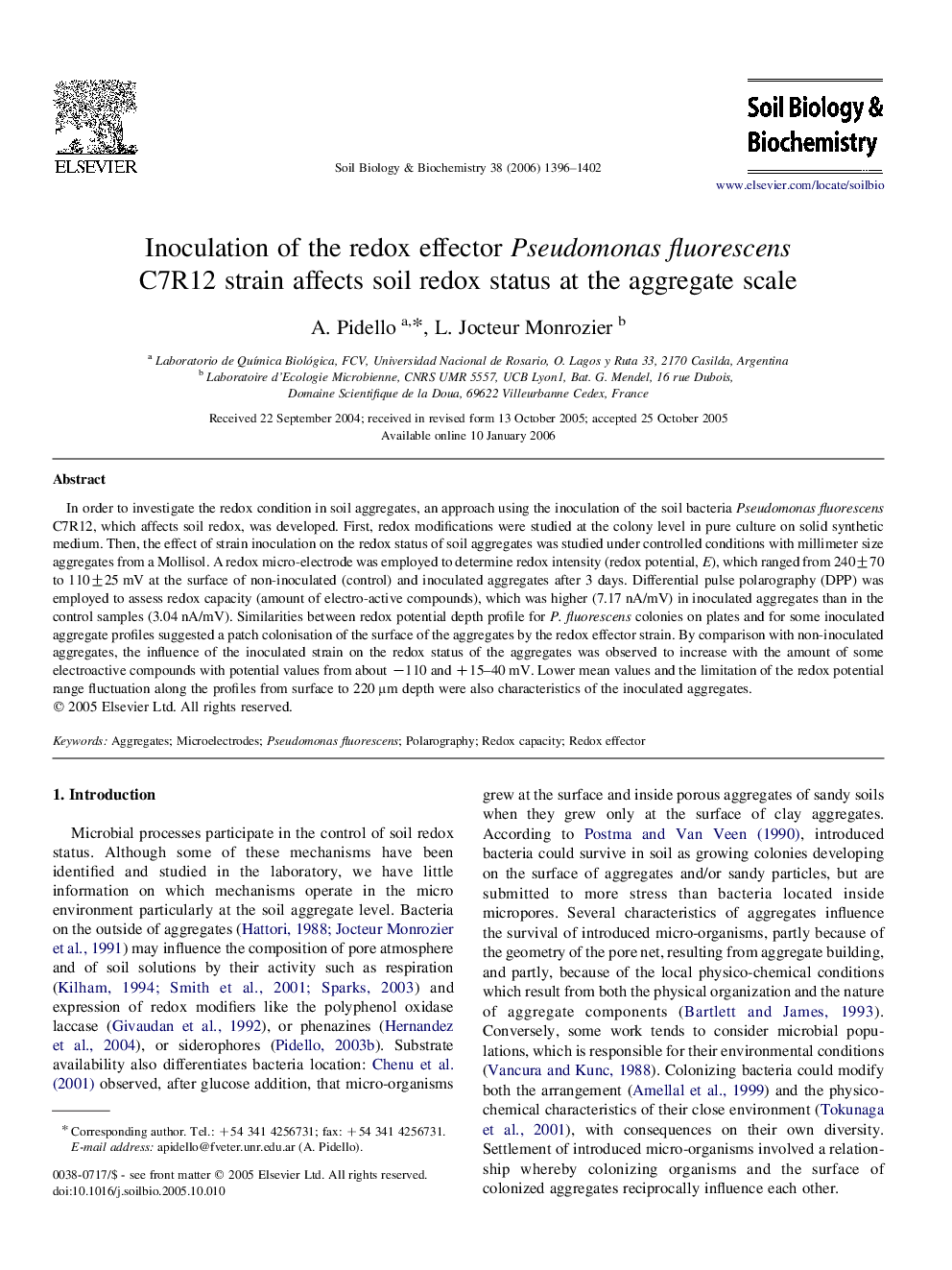| Article ID | Journal | Published Year | Pages | File Type |
|---|---|---|---|---|
| 2026663 | Soil Biology and Biochemistry | 2006 | 7 Pages |
In order to investigate the redox condition in soil aggregates, an approach using the inoculation of the soil bacteria Pseudomonas fluorescens C7R12, which affects soil redox, was developed. First, redox modifications were studied at the colony level in pure culture on solid synthetic medium. Then, the effect of strain inoculation on the redox status of soil aggregates was studied under controlled conditions with millimeter size aggregates from a Mollisol. A redox micro-electrode was employed to determine redox intensity (redox potential, E), which ranged from 240±70 to 110±25 mV at the surface of non-inoculated (control) and inoculated aggregates after 3 days. Differential pulse polarography (DPP) was employed to assess redox capacity (amount of electro-active compounds), which was higher (7.17 nA/mV) in inoculated aggregates than in the control samples (3.04 nA/mV). Similarities between redox potential depth profile for P. fluorescens colonies on plates and for some inoculated aggregate profiles suggested a patch colonisation of the surface of the aggregates by the redox effector strain. By comparison with non-inoculated aggregates, the influence of the inoculated strain on the redox status of the aggregates was observed to increase with the amount of some electroactive compounds with potential values from about −110 and +15–40 mV. Lower mean values and the limitation of the redox potential range fluctuation along the profiles from surface to 220 μm depth were also characteristics of the inoculated aggregates.
